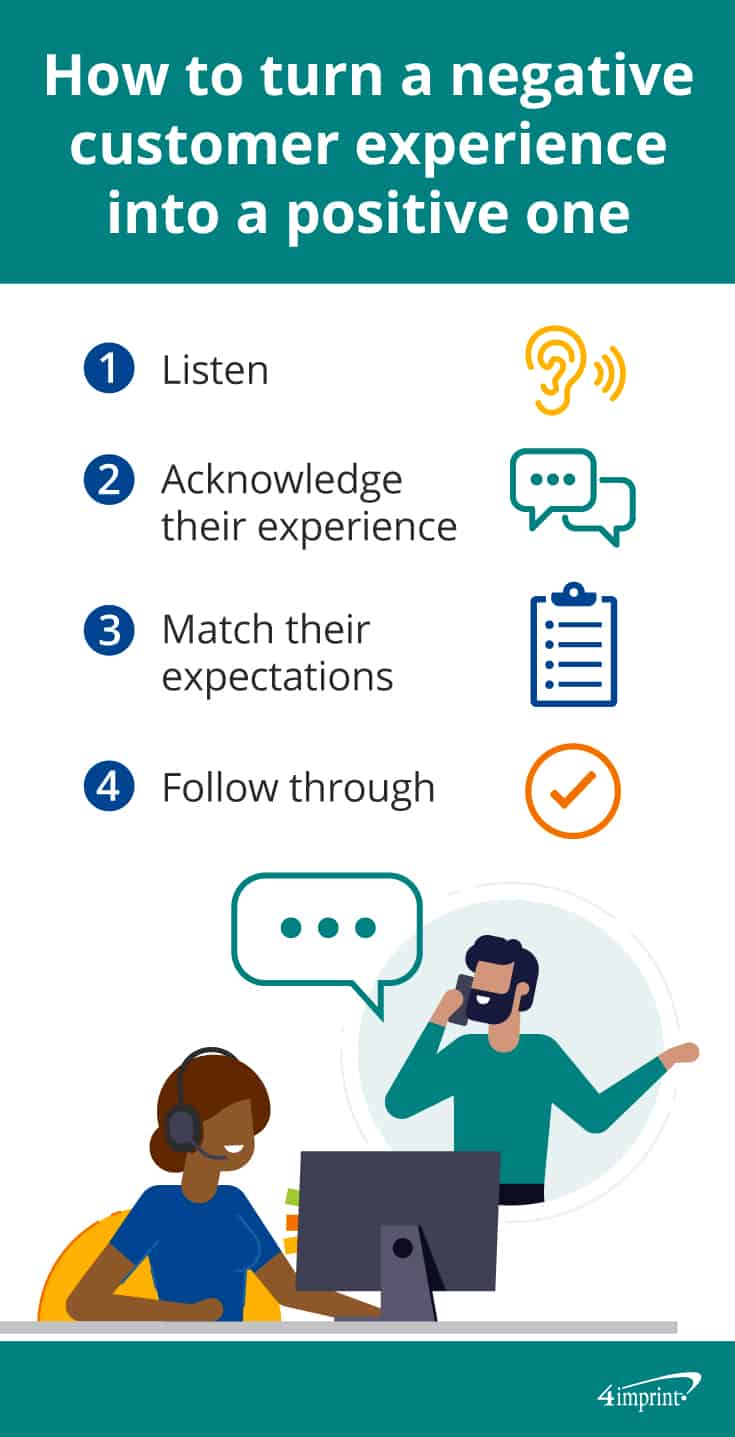07Your team is human. And humans make mistakes. While a mistake can easily turn an interaction into one that’s less than positive, it’s been shown that taking the right steps toward customer service recovery can make a customer more loyal than they were before the mistake happened. In fact, if you provide excellent customer service, 78% of people will do repeat business with you, even after a mistake is made.

When handled with grace, tact and understanding, you can quickly turn a sticky situation into a positive one, making customers more loyal than ever to your brand. Help your team respond to dissatisfied customers in the best way possible with these four customer service recovery steps.

1. Genuinely listen
When listening to a customer complaint, it can be tempting to jump in with questions or solutions. Let them talk, give them your full attention, and listen to what they’re saying without thinking ahead to how you’re going to respond.
Use active listening, which is the process of listening attentively, summarizing, reflecting what the customer says, and not judging or jumping to advice. This method of listening involves verbal and nonverbal feedback (like leaning in, making eye contact, mirroring and smiling). Actively listening to what the customer has to say can make them feel seen and heard—in turn helping them feel more amiable toward your brand.
2. Acknowledge their experience
Even if you feel your company is in the right and an apology isn’t necessary, acknowledge your customer’s difficulty. Offer an authentic apology for their experience. The phrase “The customer is always right” holds merit—not necessarily because the customer is truly always right, but because you want them to feel like it.
If clients feel you’ve turned their bad experience into a good one, they’ll feel more positive about your brand and may be inclined to come back and even recommend you to others. In fact, interaction. Go above and beyond customer service recovery by offering a goodwill gift, like a mint tin, an insulated tote or a vacuum bottle.
3. Match their expectations
What does your customer want you to do? You must match their expectations as closely as possible. Be sure to clearly spell out what you can do to make them feel satisfied—and on the same note, confirm with your customer that your actions will indeed remedy the situation. This will help customers remain calm and focused on the solution. And remember to let them know the timeframe necessary to make that solution happen.
Hand out a useful customer service giveaway, like a multi-tool, a leather coaster or an ice scraper, to leave a lasting positive impression. Every time they use their gift, your customer will remember how you quickly and graciously provided the help they needed.
4. Follow through (and follow up)
The final—and most important—step is to follow through on your promises. Sometimes, carrying out the solution to a customer’s problem may involve more than one team member. Ensure everyone knows what needs to be done and when it needs to happen. It’s 5-25 times more costly to gain a new customer than to retain one. Follow-through is paramount to customer happiness.
In addition to following through on your promises, you must also follow up with your customer once your team has verified that the problem has been solved. Ask your customer if they feel their needs were met and if there’s anything else you can do for them. Send a customer service giveaway, such as a Manicure Pod, cutlery set or wireless power bank, to build the customer’s brand loyalty.
Make customers happy—fast
A frustrated customer can easily be turned into a happy, loyal one with the right customer service recovery strategies. By doing things like active listening and matching expectations, your brand will become known as one that truly cares. Good luck!
Key Takeaways:
- Actively listen to customers
- Acknowledge their difficulties
- Do what they want you to do
- Follow up to ensure they’re satisfied
